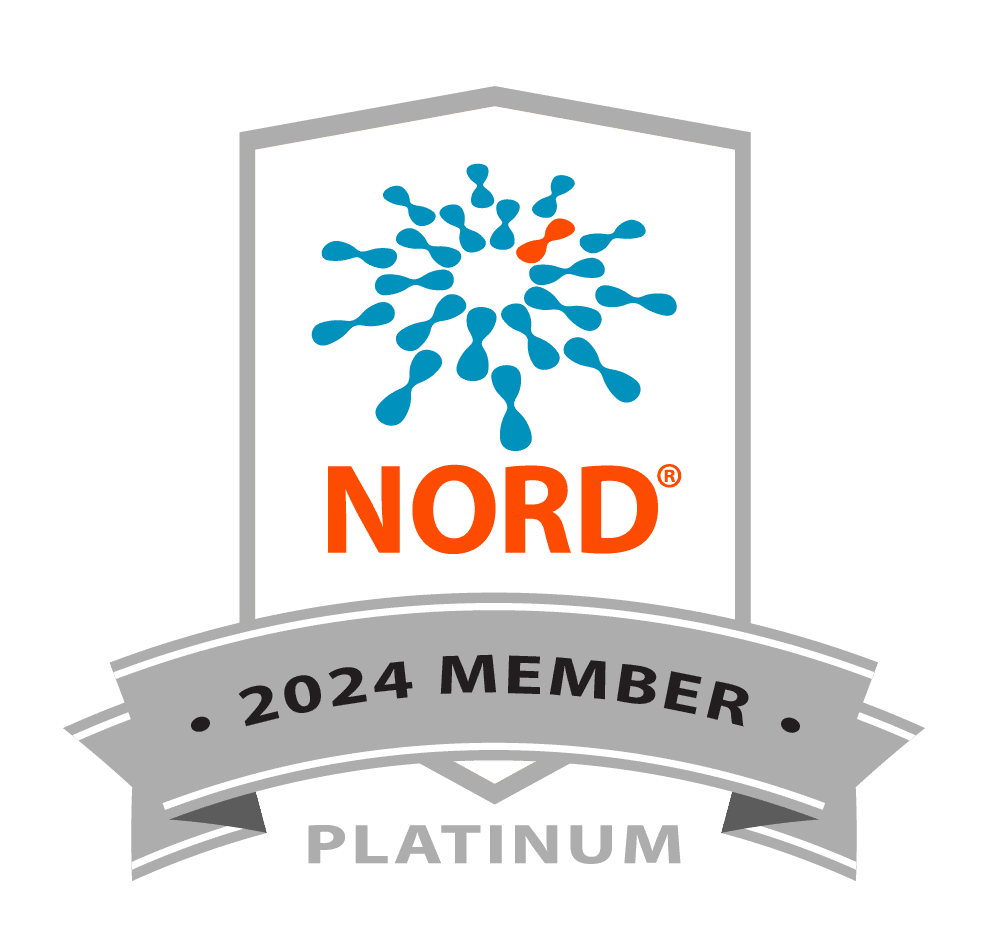Ongoing Rehabilitation Strategies
October 8, 2021
Dr. Philippines Cabahug talked about ongoing rehabilitation strategies after a rare neuroimmune diagnosis. She discussed neuroplasticity and the importance of continuing to rehabilitation. Her presentation covered types of electrical stimulation, weight bearing, task specific practice, locomotor training, aquatic therapy, robotics, exoskeleton and more.
PDF TRANSCRIPT
Transcript
[00:00:00] Chitra Krishnan: It is my pleasure to introduce our next speaker, Dr. Philippines Cabahug. Dr. Cabahug is in an Assistant Professor of Physical Medicine and Rehab at the Johns Hopkins University School of Medicine. She also directs the spinal cord injury fellowship program at the International Center for Spinal Cord Injury at Kennedy Krieger Institute. Thank you, Dr. Cabahug, for joining us and over to you. Please join the session by sharing your audio and video.
[00:00:34] Dr. Philippines Cabahug: Hi. Good afternoon. I hope…
[00:00:35] Chitra Krishnan: There you are. Perfect.
[00:00:36] Dr. Philippines Cabahug: Can you hear me?
[00:00:38] Chitra Krishnan: We can.
[00:00:38] Dr. Philippines Cabahug: Just give me a thumbs up because I couldn’t hear you, Chitra, earlier. Good. Okay. So, let’s see. Alright. So, good afternoon, everyone. My name is Dr. Philippines Cabahug. I’m one of the physiatrists at the International Center for Spinal Cord Injury, and today, I’ll be talking about ongoing rehabilitation strategies, particularly in those who have been living years from their onset of the injury to their spinal cord or their central nervous system. I do not have any immediate disclosures.
[00:01:19] So the objective of this talk today is just to present an overview of the rehabilitation approach in persons living with chronic paralysis or chronic weakness stemming from their neuroimmune disorder or neuroinflammatory disorder or whatever has caused the insult to their spinal cord. I’m also going to briefly discuss some available rehabilitation interventions. So, in terms of the continuum of care, so you have from acute hospitalization to inpatient hospitalization, and your rehab to your discharge home, and every step of the way from acute to chronic, your rehabilitation will play a role in your recovery.
[00:02:08] The question now, however, is how long? How long will this rehabilitation process take? Will it make any difference even if you are years out from the original insult to your body? So, you might be familiar with this. Rehabilitation is always a patient-centered approach. And for the longest time, the focus was on teaching people who have been living with an insult to their central nervous system about how to live, how to compensate for the function that has been lost. But luckily, in the past 20 years or so, there has been a marked paradigm shift from teaching compensatory strategies to involving and engaging patients in doing rehabilitation to facilitate or to push that recovery of function.
[00:03:09] So an important thing to consider, an important concept that is, that underlies everything that we do now for rehab, is this concept of neuroplasticity. So, it is the ability of your brain and your spinal cord to rewire, to reorganize all of these connections, and it could be through collateral sprouting, remodeling, or regeneration of transected axons, and this is always going to be in response to learning and experience, and this is true even after the injury. So, I don’t know if you can see my mouse pointer here, so you have the lesion in your spinal cord, the body will find a way to try to branch out to make connections and to strengthen pre-existing connections.
[00:03:59] Now, the big question is, how successful will this effort be? Will the sprouting need to go to where it needs to go? It is like you’re driving, and you have to get to a place, but there is something that’s blocking your way, and you have to go through a detour. Now the question is, is the detour that you are going through, is it the correct one? Or is it the most efficacious one for you to reach your intended destination? Okay. So, how are you going to do this? It is through neurorehabilitation. It is this methodology that stimulates, or facilitates, rather, neuroplasticity, trying to make the best, and strengthen residual connections, and to reorganize that circuitry that has been affected by your initial injury in order to facilitate functional outcomes.
[00:05:00] So what we do in our center is based on activity-based therapies. So, we do a lot of repeated near-normal activity, and it is not just for compensation. We focus on stimulating above and below the level of the lesion in your spinal cord, and the goal is to optimize your neurologic system, offset the rapid aging and physical deterioration, and minimize the problems that are associated with the secondary complications that can be seen when you’ve had an injury to your spinal cord. So, basically these are lifelong interventions, and they are based on this concept that neuroplasticity is activity dependent. And the goal for all of this intensive therapy that we do is to drive the changes in your nervous system, in your muscular system by the repetitive activation of your body, of the system, above and below your injury level.
[00:06:08] When I first started working and training, there were initially five key therapeutic components of when we do your activity-based therapy. So, you have Functional Electrical Stimulation, which I’ll explain more later, weight bearing activities, task-specific practice, massed practice, and locomotor training. So, this has evolved, and we’ve included a lot of more tools in armamentarium as technology and the ability to apply technology to day-to-day clinical work has improved. As you can see here, one of our patients in our center is being set up for Functional Electrical Stimulation, and as you see, we are stimulating below the level of her lesion.
[00:06:56] So before I move on and further explain this, let’s unpack the concept of electrical stimulation. There are many types of electrical stimulation. There’s Neuromuscular Electrical Stimulation, wherein electricity is applied across the skin over an intact nerve or muscle, which evokes an action potential. So, it’ll make your muscle contract. Now, Functional Electrical Stimulation, what I was showing earlier, is you apply that stimulus, not to an intact nerve, but to a paralyzed or a weak nerve or muscle in order to facilitate or achieve function. Whenever you do Functional Electrical Stimulation, it is often paired with a specific task for a specific activity. Alright.
[00:07:48] Now, Transcutaneous Electrical Nerve Stimulation, and some of you may be very familiar with this, it’s a type of electrical stimulation that is used for pain modulation by exciting peripheral nerves using sensory or motor settings. So, basically, you’re feeling something instead of the pain. And it’s been exciting this past decade. There is more use now of Transcutaneous Electrical Stimulation in order to help facilitate motor activation, and I’ll talk more about that in a bit. Alright. So, this here is, again, Functional Electrical Stimulation. You activate nerves or stimulate over a muscle that’s been paralyzed, so you’re affecting or facilitating movement. So, he is pointing that he is getting contractions in his quads. Alright?
[00:08:42] Now, when it is paired with a task-specific practice, it’s an example of orthotic substitution or a neuroprosthesis. Let’s move to the next slide. So here, you see a lady who’s walking with Lofstrand crutches and bilateral knee-ankle-foot orthosis. So, she was provided with a Functional Electrical Stimulation that was paired with a specific task. The task being to facilitate the muscle that lifts up her ankle. So, as you can see, this has helped improved her walking compared to previously without the electrical stimulation. She has a walk aid by the way. Alright. Now I’ll move on to the next slide. Alright.
[00:09:37] Now, one of the key components of activity-based therapy is to facilitate opportunities to bear weight in your upper and lower extremities. And again, this is all going through that foundation of you have to stimulate above and below. Stimulate that sensation too, that sensation that your body is bearing weight. So, you could do it on your forearms. Here you see a man on all fours or quadruped. Here the weight bearing is paired, if you see my mouse, my pointer, it’s paired with gait training or practicing walking. Alright. Or, for example, this weight bearing can be paired also by using stander. This is a static stander or something that also glides, so you also incorporate activity with that. Alright.
[00:10:34] Now for task-specific training, task-specific practice. So, in order to do a specific goal movement, like for example, he wants to learn how to sit up better on his own. So, he is learning to break down the task into something specific and that he repeats frequently, learning to master that skill, okay? So, it is goal oriented. It involves repetition. He doesn’t have to do that same combination each time. Variety, diversity challenges your nervous system to learn more and to adapt better, and eventually get the whole point of sitting down. So, but first, you start having to have your, to improve your bed mobility.
[00:11:22] And task specific, so if you wanted to learn how to prepare your meals, you do a lot of practice. You learn how to write. So, before you do all of those tasks, you have to break them down into more specific and non-specific task activities in order to reach that goal. So, here you see one of our patients practicing an overall grasp. Again, it helps promote cortical reorganization. It involves repetition. You improve your strength, range of motion, and control. And if you’ve played a musical instrument, you know that practice makes perfect, and perfect practice makes perfect. Alright.
[00:12:12] Now, aside from that, you can also use robotics in order to help you do these massed practice and task-specific activities. And again, before I proceed, I have no ties with these companies or these products that I am mentioning. It just so happens that these are the things that we use in our center. We have the Armeo, so it helps, unfortunately I don’t have a video, but the hands are bound here, and this person is practicing opening and closing their fingers. And here the MyoPro, they’re working on the task of writing, okay?
[00:12:56] Now, locomotor training. So, locomotor training is a very specific approach used to help restore walking and other motor functions. So, you see that this person here is bearing weight. They’re optimizing his sensory cues. You see the therapist making sure that the joints are properly positioned in order to try to minimize compensation and try to stimulate muscles to do what they’re supposed to do. So, this is one example of how we use all of these concepts of activity-based therapy in one activity with locomotor training. Alright.
[00:13:48] Now this one is one of my patients. Now he is practicing skills that he’s learned at locomotor training. So, he’s doing gait training with his body weight that’s been supported over ground. So again, it’s just a matter of practice, practice, practice, and there are technologies that we can utilize to help facilitate better ease in doing these repetitive movement patterns. Okay.
[00:14:21] Now, let’s move to aquatic therapy. I love prescribing aquatic therapy to my patients because when you utilize the properties of water. Water is buoyant. It is a safe environment to exercise. It supports your weight. It protects your joints, and in addition to this, it helps provide resistance. And when you do aquatic therapy, it helps you focus on isolating certain movements, and it’s easier to do these repetitive movement patterns, and a lot of my patients find it fun. So that’s a big plus. So, for example, this person, he’s working on his core, so he is practicing on doing rotation and trunk flexion and rotation in the pool. Again, he is able to isolate these movement patterns better. Alright. Then there’s more aquatic therapy. Okay. This is gait training in the pool, so we train patients to walk in the pool and out of the pool.
[00:15:31] Now for exoskeletons, we have come a long way. We’re actually quite closer to the movies right now. We have the Lokomat, where it is a tethered exoskeletal system. So again, repetitive movement pattern of weight bearing and gait training. This one is a G-EO, which a lot of our patients do. They practice, again, this repetitive movement pattern of walking, weight bearing, optimizing their kinematics and sensory system. These are all of the exoskeletons that are available in the market. We have here the EXO which we use in our clinic. And again, they incorporate activators to try to approximate near normal gait. Okay. Again, this is one of our patients practicing using the exoskeleton in our gym.
[00:16:26] Now, blood flow restriction. So, for those who are not able to pump iron or facilitate good weight training, we use external pressure to limit the blood flow to exercising muscle, and this helps increase the skeletal muscle size, and strengthen endurance in different populations. Another one is acute intermittent hypoxia where you develop a brief intermittent episodes of breathing oxygen-deprived air, and you alternate it with breathing room air that triggers mechanisms for neuroplasticity. It helps improve breathing capacity, lower and upper limb function in persons with spinal cord injury, and even walking in people with spinal cord injury.
[00:17:14] Virtual reality is, again, another intervention that is used. Usually, it is interactive. It provides multi-sensory experiences in order to do certain tasks. It is fun and helps people motivate when they try to develop a range of skills in their rehab. I always say rehab should be fun. He is trying to put out the fire and doing a whole lot of rehabilitation in the process. Okay. I still have a few minutes for new frontiers.
[00:17:51] So, spinal cord stimulation has been in the news a lot in the past few years. You have epidural stimulation, it’s what you’ve been hearing on the television, where electrodes are placed on top of the dorsal, the back of the spinal cord, and helps deliver stimulation. Intraspinal, electrodes are placed inside. This is experimental. It’s mostly done in animals as far as I know. Okay? So, this is what I was alluding to earlier. There have been in the past, in this past 10 years, groundbreaking discoveries about the implantation of that epidural stimulation to help facilitate movement, motor function, walking. Okay? Okay.
[00:18:42] So this is how epidural spinal stimulation for a spinal cord injury works. Electrodes are placed at the back of your spinal cord. Impulses are not being conducted. They will be conducted to help transmit walking impulses. But regardless, even if you have that implanted inside you, you will still need therapy. As I mentioned earlier, you can make the connections, but you don’t know if the connections are working properly, and rehabilitation, neurorehabilitation will help facilitate that neuroplasticity, will help facilitate that process. Okay.
[00:19:26] So the last one I’m going to talk about is transcutaneous spinal cord stimulation. The first two types of spinal cord stimulation that I mentioned are invasive. With transcutaneous, so it’s almost the same, but it’s noninvasive and we apply transcutaneous electrical stimulation. It increases the excitability of your spinal, locomotor, and your neuron units, and it helps facilitate your body, your legs, to move. But the thing is, if you turn the stimulation off, and this is what they’re trying to figure out, what’s the best way to deliver this in order to help facilitate a longer carryover of that. If you stimulate, you will have movement, but the question right now is making it a functional and sustainable movement, and that’s where the research is being developed, right, on how to facilitate that.
[00:20:25] One thing I’d like to mention, also, before I end this talk, is that these stimulation, the nice thing about it is they have discovered that, aside from helping improve walking activity or walking ability, there have been some good effects in improving other dysfunctions associated with damage to your spinal cord, like bowel/bladder function and even control of your blood pressure. Okay.
[00:20:57] So in summary, neuroplasticity is the ability of your brain and your spinal cord to rewire its circuitry to allow for recovery of function. To optimize neuroplasticity, you have to train specifically, repetitively, and intensely as much as possible. Of course, you still have to live your life, but you get the drift of that. And then, one thing I want to point out, there is no hard stop in terms of neuroplasticity. So, this is why I’m saying, even if you’re years out, it is still worth your while to incorporate rehabilitation or daily physical activity and exercise in your life in order to help optimize this process. And, thank you very much. That is the end of my talk.
[00:21:49] Chitra Krishnan: Great. Thank you so much, Dr. Cabahug. As always, an incredible presentation. You covered it.
[00:21:56] Dr. Philippines Cabahug: I still can’t hear you.
[00:21:57] Chitra Krishnan: You can’t hear me?
[00:21:59] Dr. Philippines Cabahug: I can’t.
[00:22:00] Chitra Krishnan: Okay, I’m going to continue the talk here. There are a few questions. For those who can hear me, I’m going to ask Dr. Cabahug those questions and separately put them on the chat. Thank you, all, very much. We’ll see you at the next session. Track two is on disability benefits and vocational rehab by Janelle Hewelt. Bye.



